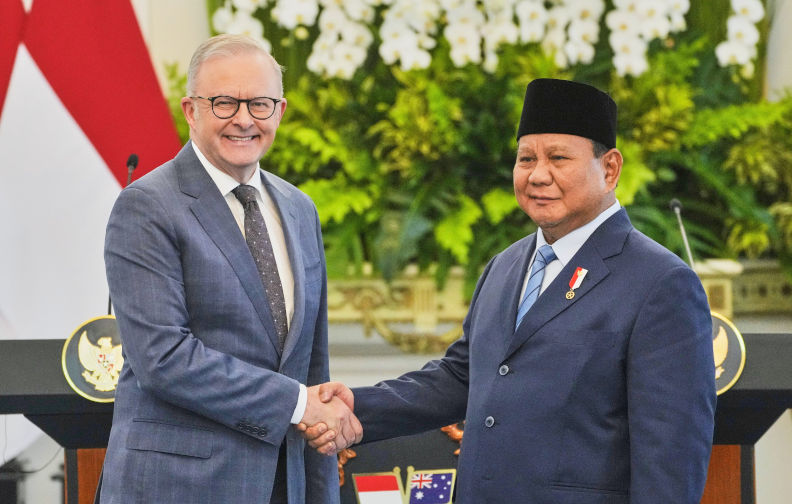Indonesia-Australia economic partnership can power Indo-Pacific resilience
October 22, 2025
Amid intensifying great power rivalry, middle powers like Indonesia and Australia face a critical question – can economic co-operation help them hedge against strategic vulnerability?
This concern animated their 2+2 meeting in Canberra on 28 August 2025, where both governments committed to advancing joint efforts in clean energy, industrial ecosystems and the low-carbon transition. This effort, to link prosperity with stability, risks falling short if these intentions are not translated into meaningful action.
Foundational to this effort is the Indonesia-Australia Comprehensive Economic Partnership Agreement, a bilateral trade and investment deal that came into effect in 2020 and has already widened market access and investment flows. A 2021 Katalis-DFAT report reinforced the IA-CEPA as a springboard for co-operation in electric vehicles, batteries and critical minerals processing. For Jakarta, this aligns with President Prabowo Subianto’s downstream industrialisation agenda. For Canberra, it reflects a long-term commitment to channel significant public investment into clean energy and processing industries.
Beyond economic incentives, strengthening ties with Indonesia offers Australia a way to mitigate its structural dependence on Chinese markets, a vulnerability that has repeatedly exposed Australia to economic coercion. By deepening co-operation on critical minerals, clean energy and defence, Australia positions itself not only as a partner to Indonesia, but also as a more resilient middle power in the Indo-Pacific. Such collaboration strengthens regional supply chain resilience and promotes an Indo-Pacific economic order less dependent on a single dominant supplier.
Indonesia’s co-operation with Australia inevitably intersects with broader Indo-Pacific dynamics. India’s role is notable here – like Indonesia, it is investing heavily in clean energy and EV supply chains through initiatives such as the Production Linked Incentive Scheme for advanced batteries. Yet, India still lacks secure access to nickel and other critical inputs.
Indonesia’s nickel reserves and Australia’s lithium resources create potential synergies for a triangular economic framework that connects Southeast Asia’s raw materials with South Asia’s processing and assembly hubs. Such linkages would not only strengthen bilateral prosperity, but also embed both countries in diversified regional networks. By providing India with reliable partners for critical mineral inputs, Indonesia and Australia can mitigate the risks of economic bloc politics and foster a more interdependent Indo-Pacific order.
While deepening economic ties, Indonesia and Australia must navigate a complex strategic environment shaped by US-China competition. Washington increasingly regards critical minerals and clean energy supply chains as strategic assets tied directly to its national security and industrial competitiveness. From lithium to nickel, these resources are now viewed less as commodities and more as instruments of geopolitical leverage.
This translates into direct US pressure on allies to secure supply chains that are less exposed to China. For Washington, Indonesia’s nickel reserves and Australia’s lithium resources are indispensable for EV batteries, elevating both countries as critical partners in its Indo-Pacific strategy. Still, much of Indonesia’s nickel industry, representing 61% of global supply in 2024 and projected to rise to 74% by 2028, is still dominated by Chinese firms through majority control of smelters and downstream processing facilities.
For Jakarta and Canberra, the challenge is to build resilience and attract diversified partnerships while avoiding a zero-sum contest between the two superpowers. This means translating high-level agreements into shared projects, like Indonesia’s battery joint venture with LG and Hyundai and the Memorandum of Understanding between Indonesia and Australia’s Northern Territory. It also involves creating transparent investment frameworks to attract partners like Japan and South Korea, as well as expanding clean energy research collaborations. Economic co-operation risks becoming entangled with strategic rivalry unless both countries carve out pragmatic avenues that safeguard sovereignty while delivering tangible benefits for shared prosperity.
If managed wisely, the synergy of IA-CEPA, critical minerals co-operation and clean energy ambitions could allow Indonesia and Australia to move beyond current asymmetries in cost structures and geopolitical weight. The crucial test is whether both governments can move from declarations to action. This could involve advancing joint ventures in nickel and lithium processing, ensuring transparent environmental, social and governance standards for foreign investment and launching pilot projects in battery manufacturing and clean-energy technology. Without such deliverables, the partnership will struggle to demonstrate tangible value and risks losing momentum.
Republished from East Asia Forum, 18 October 2025
The views expressed in this article may or may not reflect those of Pearls and Irritations.
